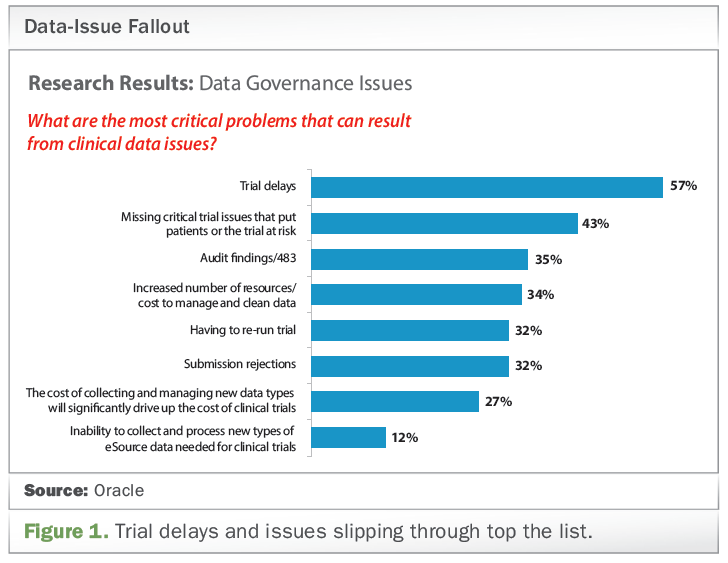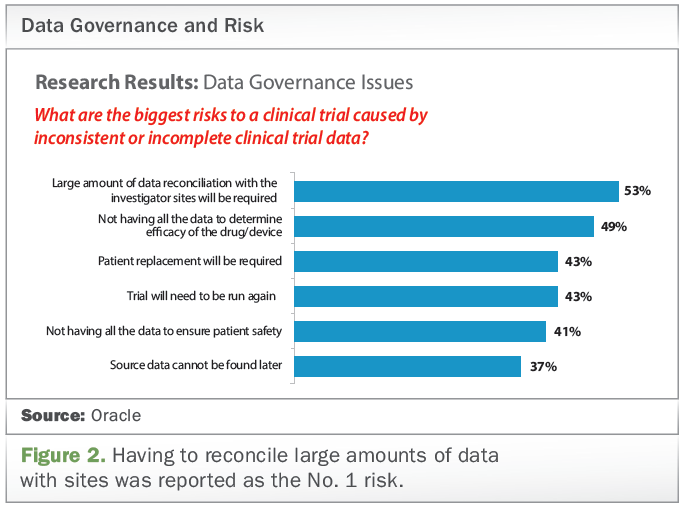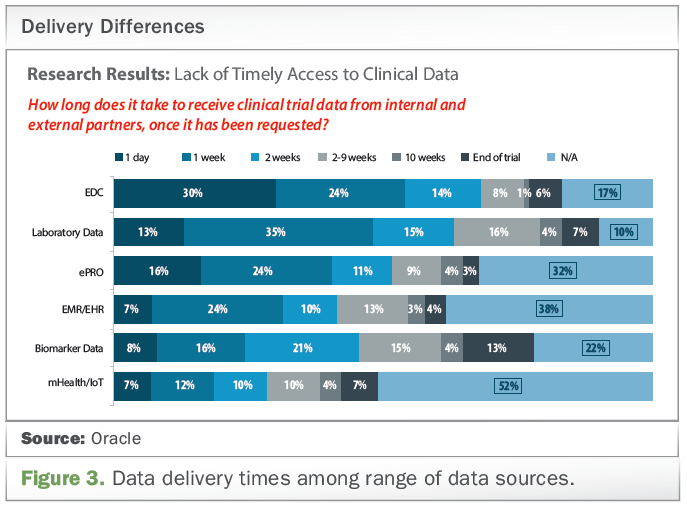Data Dilemmas in Clinical Trials Continue
Applied Clinical Trials
Survey uncovers key findings amid today’s explosion of data volume and sources-and the added complexity in managing clinical data.

Every time you order an Uber, a chain of transactions take place, from matching you to your driver and mapping your location to generating notifications and processing payment. A treasure trove of data is generated. On the nights you decide to stay in, you might stream a movie on Apple TV or Netflix. Digital rights are managed, payments are made, and a record is logged so when you sift through your iTunes receipts or Netflix bill, you can recall what you watched and how much you spent. It seems data is created by every move we make and it’s reorganizing entire industries like transportation and entertainment.
For those of us in the world of life sciences, the inherent value of data is not new. This industry doesn’t exist without data. Having clean, high-quality, clinical trial results data to send to regulators enables biopharmas, contract research organizations (CROs), and medical device companies to prove the safety and efficacy of new therapies and make historic contributions to advance medicine. In addition to capturing data related to the safety and efficacy of drugs in clinical trials, data on patients is collected as part of the clinical trial process. From vitals and lab data to patient diary data, this data must be clean, high-quality, and consistent or it can stall the progress of a clinical trial.
We’re in the midst of a data explosion and we have more data than we know what to do with. Clinical data is coming in new formats and there’s a shortage of data scientists who can interpret and analyze it for meaningful use. A study from Tufts University shows that the number of data points included in a Phase III study today has doubled from 10-years prior. As the volume of trial data continues to grow, and the variety of data and sources continue to increase, clinical data management challenges are becoming more complex.
Earlier this year, a global survey was conducted to determine the crucial “hype versus reality” factor for clinical operations as it relates to data management. Surveyed were clinical researchers, data scientists, and clinical programmers from biopharma organizations, CROs, and a small percentage of medical device companies. Respondents were from around the globe-61% from North America, 20% from Asia-Pacific, and 17% from Europe. The results, outlined here, tell us where issues exist and what to prioritize over the next five years.
In a nutshell, the survey revealed that more than half of the clinical data professionals surveyed are not confident in the quality and completeness of their clinical data from an audit and compliance perspective. Costly data preparation, slow data reconciliation, and poor data quality are hindering drug development efforts for life-saving therapies.
Fifty-seven percent of respondents believe that their clinical data issues cause trial delays (see Figure 1).

Additionally, 81% of respondents cited data governance issues as the biggest challenge in meeting regulatory compliance, and more than half are not confident in the quality or completeness of their clinical data when preparing for regulatory review. Figure 2 shows the results of respondents when asked about the biggest risks to a trial as a result of data governance issues.

The respondents also named inconsistent data, missing data, and patients missing visits as the top three most critical problems to catch when looking at clinical trial data.
About a third of respondents don’t feel like they have tight controls over their clinical trial data-they can’t see the entire picture of what is available, it is hard to get errors corrected, and challenges remain with searching for information.
When asked how long it takes to receive clinical trial data from internal and external partners, once it has been requested, the survey revealed that electronic data capture (EDC) and laboratory data have the fastest access times, while emerging and less standardized data sources such as mHealth/internet of things (loT) and biomarker data had the longest delivery times (see Figure 3). Evidence is showing that it is taking too long to get these new forms of data.

Lack of timely access to clinical data has other repercussions related to not being able to detect problems. As it relates to what issues might go undetected due to lack of timely access to data, 68% of respondents said protocol issues, 54% cited enrollment issues, and 43% said it could result in skewed trial results.
Managing clinical trial data is manual because the sources are diverse and siloed – some study teams have to pull data from more than 15 data sources. A total of 95% of respondents acknowledged that manual effort was involved in aggregating, cleaning, and transforming the data.
Finally, when asked about the future outlook for clinical data collection and management, 37% of respondents indicated that the most urgent challenge around clinical trial data will be the management of mHealth data. In addition, finding resources that understand how to manage and clean data was seen as the second-most important issue to address in the near future.
The data explosion puts more power in our hands than ever and has the power to bring more drugs to market faster, yet it introduces enormous challenges in terms of data governance and process. Clinical researchers shouldn’t have to spend time and resources fixing data issues that technology was built to handle. Technology can, and should, be used to eliminate unnecessary manual intervention, improve data governance, and mitigate risk so we can get therapies in the hands of patients who are waiting without delay.
Imagine a clinical R&D world where clean, organized clinical data is available in real-time, to everyone who needs it. Insight can be uncovered, decisions can be made and time and money can be saved. But more importantly, delays in clinical trials can be reduced, cutting the time it takes to get new drugs to the market. This is the goal, and this is why we need to continue to innovate and improve technology in clinical trials.
Jim Streeter is Global Vice President, Life Sciences Product Strategy, Oracle Health Sciences

Improving Relationships and Diversifying the Site Selection Process
April 17th 2025In this episode of the Applied Clinical Trials Podcast, Liz Beatty, co-founder and chief strategy officer, Inato, discusses a number of topics around site engagement including community-based sites, the role of technology in improving site/sponsor relationships, how increased operational costs are impacting the industry, and more.
Behind the Buzz: Why Clinical Research Leaders Flock to SCOPE Summit
February 7th 2025In this episode, we meet with Micah Lieberman, Executive Conference Director for SCOPE Summit (Summit for Clinical Ops Executives) at Cambridge Innovation Institute. We will dive deep into the critical role of collaboration within the clinical research ecosystem. How do we bring together diverse stakeholders—sponsors, CROs, clinical trial tech innovators, suppliers, patients, sites, advocacy organizations, investors, and non-profits—to share best practices in trial design, program planning, innovation, and clinical operations? We’ll explore why it’s vital for thought leaders to step beyond their own organizations and learn from others, exchanging ideas that drive advancements in clinical research. Additionally, we’ll discuss the pivotal role of scientific conferences like SCOPE Summit in fostering these essential connections and collaborations, helping shape the future of clinical trials. Join us as we uncover how collective wisdom and cross-industry partnerships are transforming the landscape of clinical research.